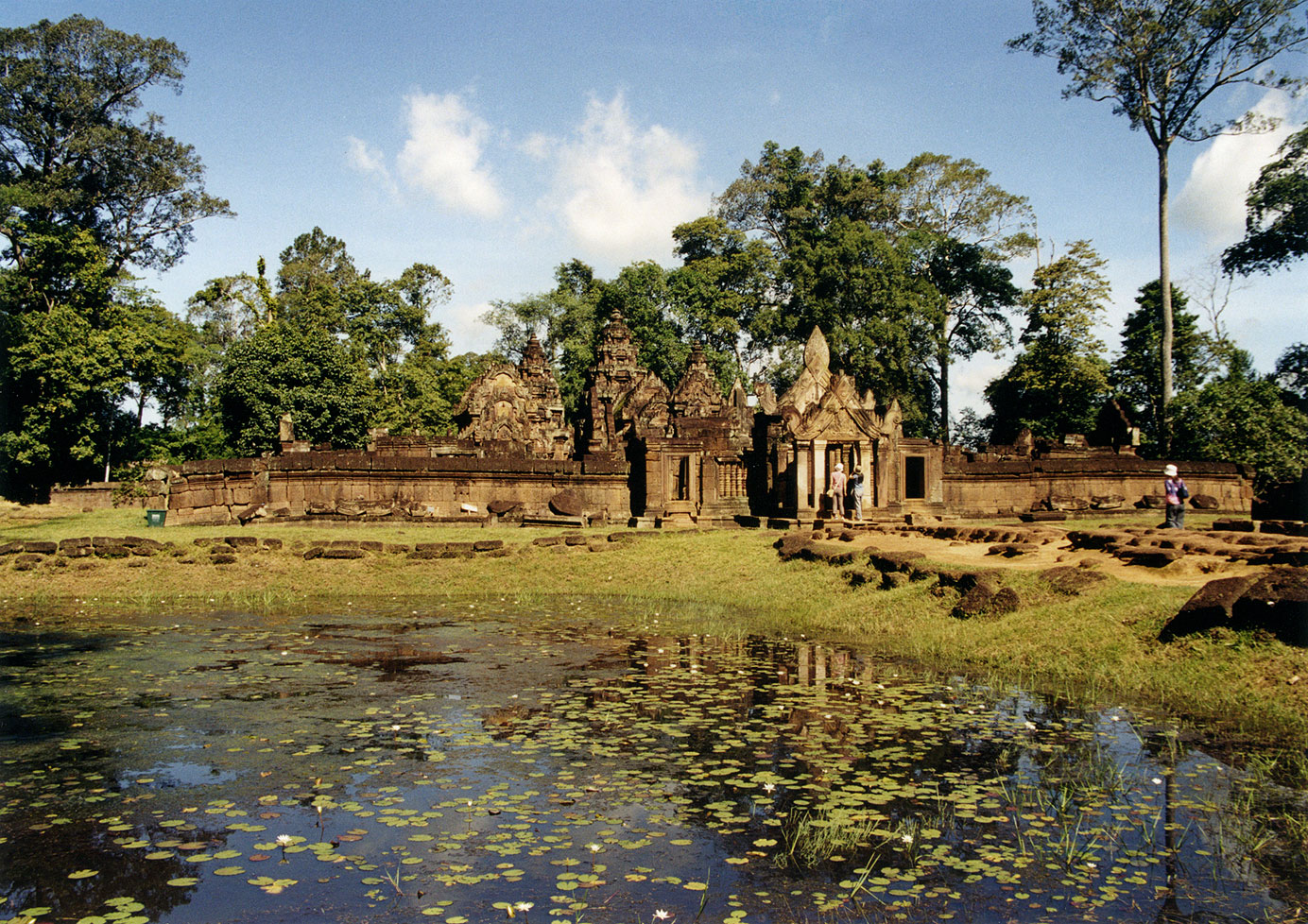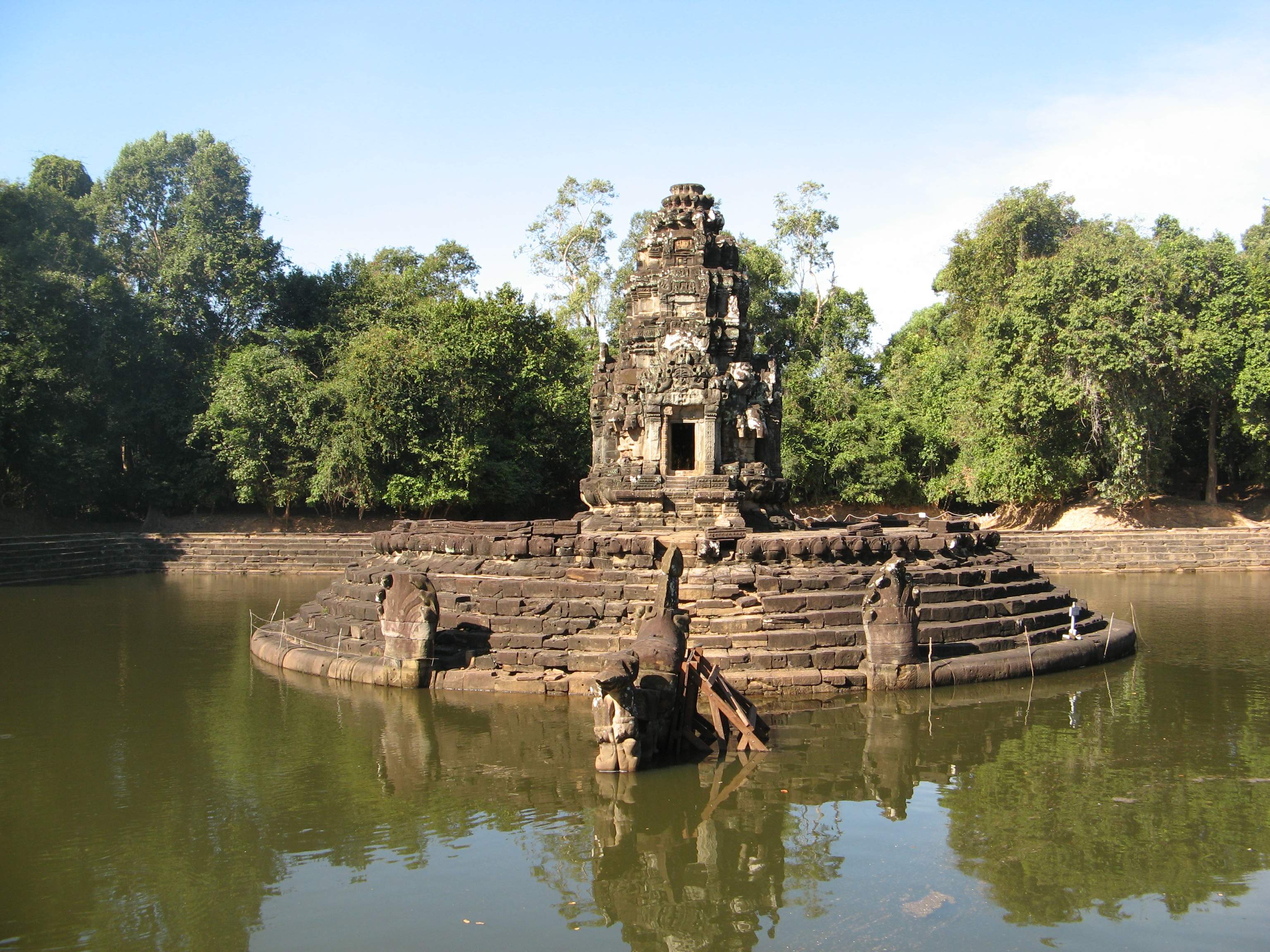|
Yajnavaraha
Yajnavaraha (10th century) was priest-doctor and a royal physician at the court of king Rajendravarman in Angkor, Cambodia, practising traditional Cambodian medicine and Ayurveda.Bynum, WF & Bynum, Helen (2006) ''Dictionary of Medical Biography''. Greenwood Press. . He was a Brahmin of royal descent and was the grandson of King Harshavarman I.Higham, C., 2001, The Civilization of Angkor, London: Weidenfeld & Nicolson, Most of his learning was from his father Damodara, who was a vedic scholar. He was known for his religious contributions and helping the poor. He was rewarded for this with a parasol of peacock feathers. He was also a musician and an astronomer at the royal court. Along with his younger brother, Vishnukumara, he commissioned the erection of a Shaivite temple called Isvarapura or Banteay Srei, 15 miles north of Angkor Wat.Higham, C., 2014, Early Mainland Southeast Asia, Bangkok: River Books Co., Ltd., He went on to become the guru of King Jayavarman V and practised ... [...More Info...] [...Related Items...] OR: [Wikipedia] [Google] [Baidu] |
Jayavarman V
Jayavarman V ( km, ជ័យវរ្ម័នទី៥) was a ruler of the Khmer Empire from his state temple, Jayendranagari, at Jayendrapura. During his reign, the Khmer Empire had 20 cities or Pur_(placename_element), pura. Early years Jayavarman V succeeded his father, Rajendravarman, when he was only ten years old.Higham, C., 2014, Early Mainland Southeast Asia, Bangkok: River Books Co., Ltd., During his early years, the court officials dominated the royal politics. He studied under a very knowledgeable teacher Yajnavaraha, a grandson of King Harshavarman I. Yajnavaraha was a distinguished scholar as he was "first in the knowledge of the doctrines of the Buddha, medicine and astronomy," Briggs, ''The Ancient Khmer Empire''p. 134 and in 967 Yajnavaraha constructed Banteay Srei, considered the jewel of Khmer art for its very beautiful display of bas-reliefs. When Jayavarman turned seventeen years old, he began the construction of his own state shrine, Ta Keo. However, an unf ... [...More Info...] [...Related Items...] OR: [Wikipedia] [Google] [Baidu] |
Banteay Srei
Banteay Srei or Banteay Srey ( km, បន្ទាយស្រី ) is a 10th-century Cambodian temple dedicated to the Hindu god Shiva. Located in the area of Angkor, it lies near the hill of Phnom Dei, north-east of the main group of temples that once belonged to the medieval capitals of Yasodharapura and Angkor Thom.Higham, ''The Civilization of Angkor'', p.79. Banteay Srei is built largely of red sandstone, a medium that lends itself to the elaborate decorative wall carvings which are still observable today. The buildings themselves are miniature in scale, unusually so when measured by the standards of Angkorian construction. These factors have made the temple extremely popular with tourists, and have led to its being widely praised as a "precious gem", or the "jewel of Khmer art." History Foundation and dedication Consecrated on 22 April 967 A.D., Bantãy Srĕi was the only major temple at Angkor not built by a monarch; its construction is credited to the courtiers ... [...More Info...] [...Related Items...] OR: [Wikipedia] [Google] [Baidu] |
Traditional Cambodian Medicine
Traditional Cambodian medicine ( km, វេជ្ជសាស្រ្តបូរាណខ្មែរ, ALA-LC: ) comprise several traditional medicine systems in Cambodia. Healers and herbalists of Cambodian traditional medicine are collectively referred to as ''Kru Khmer'' ( km, គ្រូខ្មែរ, link=no). There are many regional variations of the practice and herbal knowledge of traditional medicine within Cambodia. Traditional Cambodian medical practices are widely used in Cambodia. Even though health is among the Cambodian government's five most important issues, the healthcare system in the country is inadequate and people in more remote villages in the provinces have difficulty obtaining health care. This situation is reflected in many developing countries and, in part for this reason, the World Health Organization (WHO) is promoting the use and preservation of knowledge of several traditional medicines in many of these areas across the globe, including Cambodia ... [...More Info...] [...Related Items...] OR: [Wikipedia] [Google] [Baidu] |
Harshavarman I
Harshavarman I ( km, ហស៌វរ្ម័នទី១; or Rudraloka, died in 923) was an Angkorian king who reigned in 910–923 CE. He is mentioned by David P. Chandler, who is one of the foremost western scholars of Cambodia's modern history."Book Review: Voices from S-21" . ''The American Historical Review'' (October 2002). Family Harshavarman was a son of King and his Queen, who was a sister of . Grandparents of Harshavarman ...[...More Info...] [...Related Items...] OR: [Wikipedia] [Google] [Baidu] |
Rajendravarman
Rajendravarman II ( km, រាជេន្ទ្រវរ្ម័នទី២) was the king of the Khmer Empire (region of Angkor in Cambodia), from 944 to 968 AD. Rajendravarman II was the uncle and first cousin of Harshavarman. His principal monuments, located in the Angkor region of Cambodia's Siem Reap province, are Pre Rup and East Mebon.Higham, C., 2001, The Civilization of Angkor, London: Weidenfeld & Nicolson, Higham, C., 2014, Early Mainland Southeast Asia, Bangkok: River Books Co., Ltd., The king claimed links to the royal line of the Chenla state that had its capital at Bhavapura (the city's location is debated) and predates the start of the Khmer empire in 802 AD. Inscriptions say that the Khmer empire under his tutelage extended to southern Vietnam, Laos and much of Thailand and as far north as southern China. An inscription at Pre Rup relates that Rajendravarman II was a great warrior, his sword frequently blood-stained, his body as hard as a diamond. Though the ... [...More Info...] [...Related Items...] OR: [Wikipedia] [Google] [Baidu] |
10th-century Physicians
1 (one, unit, unity) is a number representing a single or the only entity. 1 is also a numerical digit and represents a single unit of counting or measurement. For example, a line segment of ''unit length'' is a line segment of length 1. In conventions of sign where zero is considered neither positive nor negative, 1 is the first and smallest positive integer. It is also sometimes considered the first of the infinite sequence of natural numbers, followed by 2, although by other definitions 1 is the second natural number, following 0. The fundamental mathematical property of 1 is to be a multiplicative identity, meaning that any number multiplied by 1 equals the same number. Most if not all properties of 1 can be deduced from this. In advanced mathematics, a multiplicative identity is often denoted 1, even if it is not a number. 1 is by convention not considered a prime number; this was not universally accepted until the mid-20th century. Additionally, 1 is ... [...More Info...] [...Related Items...] OR: [Wikipedia] [Google] [Baidu] |
Guru
Guru ( sa, गुरु, IAST: ''guru;'' Pali'': garu'') is a Sanskrit term for a "mentor, guide, expert, or master" of certain knowledge or field. In pan-Indian traditions, a guru is more than a teacher: traditionally, the guru is a reverential figure to the disciple (or '' shisya'' in Sanskrit, literally ''seeker f knowledge or truth'' or student, with the guru serving as a "counselor, who helps mold values, shares experiential knowledge as much as literal knowledge, an exemplar in life, an inspirational source and who helps in the spiritual evolution of a student". Whatever language it is written in, Judith Simmer-Brown explains that a tantric spiritual text is often codified in an obscure twilight language so that it cannot be understood by anyone without the verbal explanation of a qualified teacher, the guru. A guru is also one's spiritual guide, who helps one to discover the same potentialities that the ''guru'' has already realized. The oldest references to the concep ... [...More Info...] [...Related Items...] OR: [Wikipedia] [Google] [Baidu] |
Angkor Wat
Angkor Wat (; km, អង្គរវត្ត, "City/Capital of Temples") is a temple complex in Cambodia and is the largest religious monument in the world, on a site measuring . Originally constructed as a Hinduism, Hindu temple dedicated to the god Vishnu for the Khmer Empire by King Suryavarman II, it was gradually transformed into a Buddhism, Buddhist temple towards the end of the 12th century; as such, it is also described as a "Hindu-Buddhist" temple. Angkor Wat was built at the behest of the Khmer King Suryavarman II in the early 12th century in Yaśodharapura ( km, យសោធរបុរៈ, present-day Angkor), the capital of the Khmer Empire, as his state temple and eventual mausoleum. Angkor Wat combines two basic plans of Khmer temple architecture: the Khmer architecture#Temple mountain, temple-mountain and the later Khmer architecture#Gallery, galleried temple. It is designed to represent Mount Meru, home of the Deva (Hinduism), devas in Hindu mythology: wit ... [...More Info...] [...Related Items...] OR: [Wikipedia] [Google] [Baidu] |
Shaivite
Shaivism (; sa, शैवसम्प्रदायः, Śaivasampradāyaḥ) is one of the major Hindu traditions, which worships Shiva as the Supreme Being. One of the largest Hindu denominations, it incorporates many sub-traditions ranging from devotional dualistic theism such as Shaiva Siddhanta to yoga-orientated monistic non-theism such as Kashmiri Shaivism.Ganesh Tagare (2002), The Pratyabhijñā Philosophy, Motilal Banarsidass, , pages 16–19 It considers both the Vedas and the Agama texts as important sources of theology.Mariasusai Dhavamony (1999), Hindu Spirituality, Gregorian University and Biblical Press, , pages 31–34 with footnotesMark Dyczkowski (1989), The Canon of the Śaivāgama, Motilal Banarsidass, , pages 43–44 Shaivism developed as an amalgam of pre-Vedic religions and traditions derived from the southern Tamil Shaiva Siddhanta traditions and philosophies, which were assimilated in the non-Vedic Shiva-tradition. In the process of Sanskritisation ... [...More Info...] [...Related Items...] OR: [Wikipedia] [Google] [Baidu] |
Angkor
Angkor ( km, អង្គរ , 'Capital city'), also known as Yasodharapura ( km, យសោធរបុរៈ; sa, यशोधरपुर),Headly, Robert K.; Chhor, Kylin; Lim, Lam Kheng; Kheang, Lim Hak; Chun, Chen. 1977. ''Cambodian-English Dictionary''. Bureau of Special Research in Modern Languages. The Catholic University of America Press. Washington, D.C. Chuon Nath Khmer Dictionary (1966, Buddhist Institute, Phnom Penh). was the capital city of the Khmer Empire. The city and empire flourished from approximately the 9th to the 15th centuries. The city houses the Angkor Wat, one of Cambodia's most popular tourist attractions. The name ''Angkor'' is derived from ''nokor'' (), a Khmer word meaning "kingdom" which in turn derived from Sanskrit ''nagara'' (), meaning "city". The Angkorian period began in AD 802, when the Khmer Hindu monarch Jayavarman II declared himself a "universal monarch" and "god-king", and lasted until the late 14th century, first falling under ... [...More Info...] [...Related Items...] OR: [Wikipedia] [Google] [Baidu] |
Parasol
An umbrella or parasol is a folding canopy supported by wooden or metal ribs that is usually mounted on a wooden, metal, or plastic pole. It is designed to protect a person against rain or sunlight. The term ''umbrella'' is traditionally used when protecting oneself from rain, with ''parasol'' used when protecting oneself from sunlight, though the terms continue to be used interchangeably. Often the difference is the material used for the canopy; some parasols are not waterproof, and some umbrellas are transparent. Umbrella canopies may be made of fabric or flexible plastic. There are also combinations of parasol and umbrella that are called ''en-tout-cas'' (French for "in any case"). Umbrellas and parasols are primarily hand-held portable devices sized for personal use. The largest hand-portable umbrellas are golf umbrellas. Umbrellas can be divided into two categories: fully collapsible umbrellas, in which the metal pole supporting the canopy retracts, making the umbrella sm ... [...More Info...] [...Related Items...] OR: [Wikipedia] [Google] [Baidu] |






